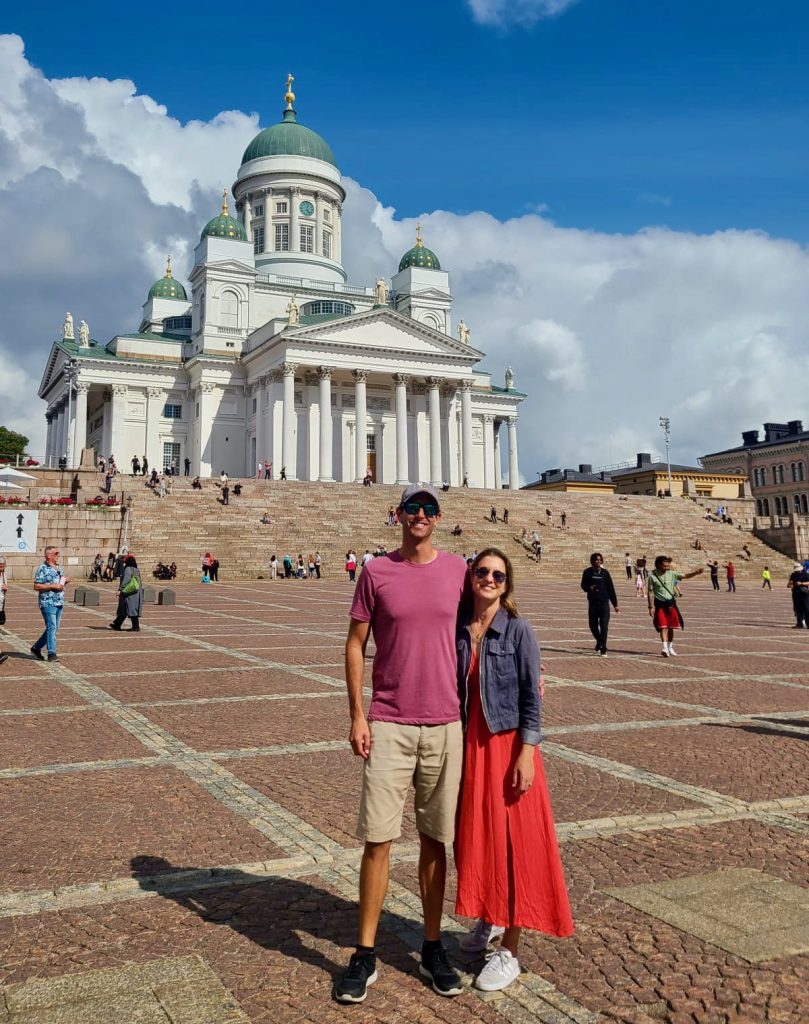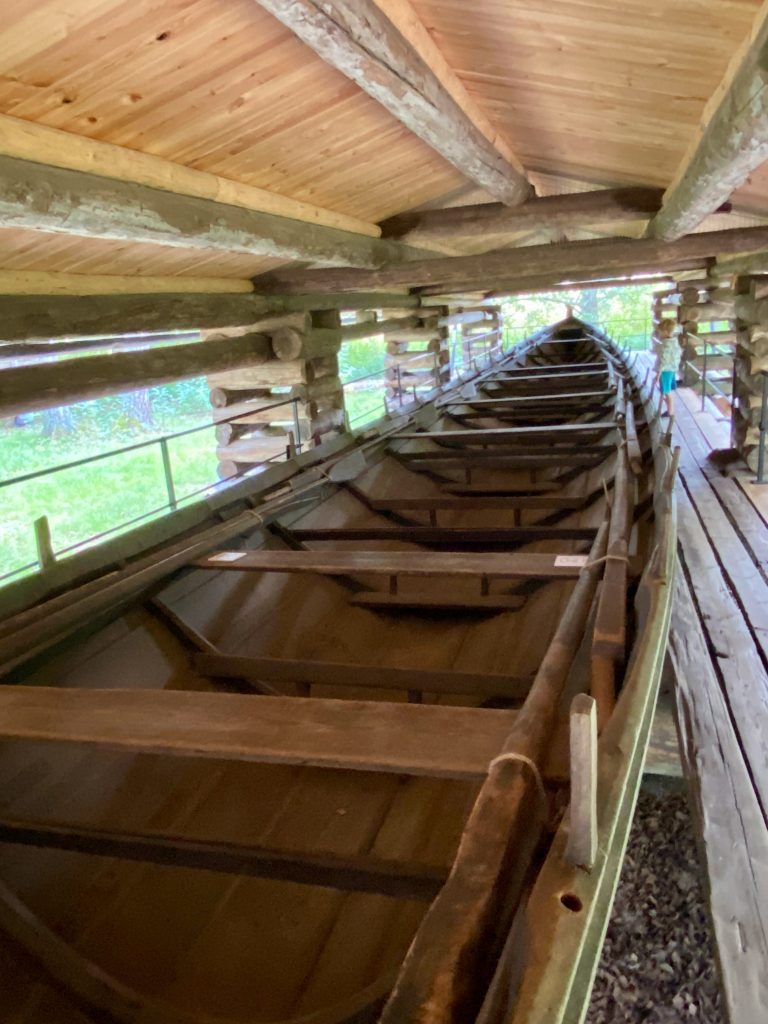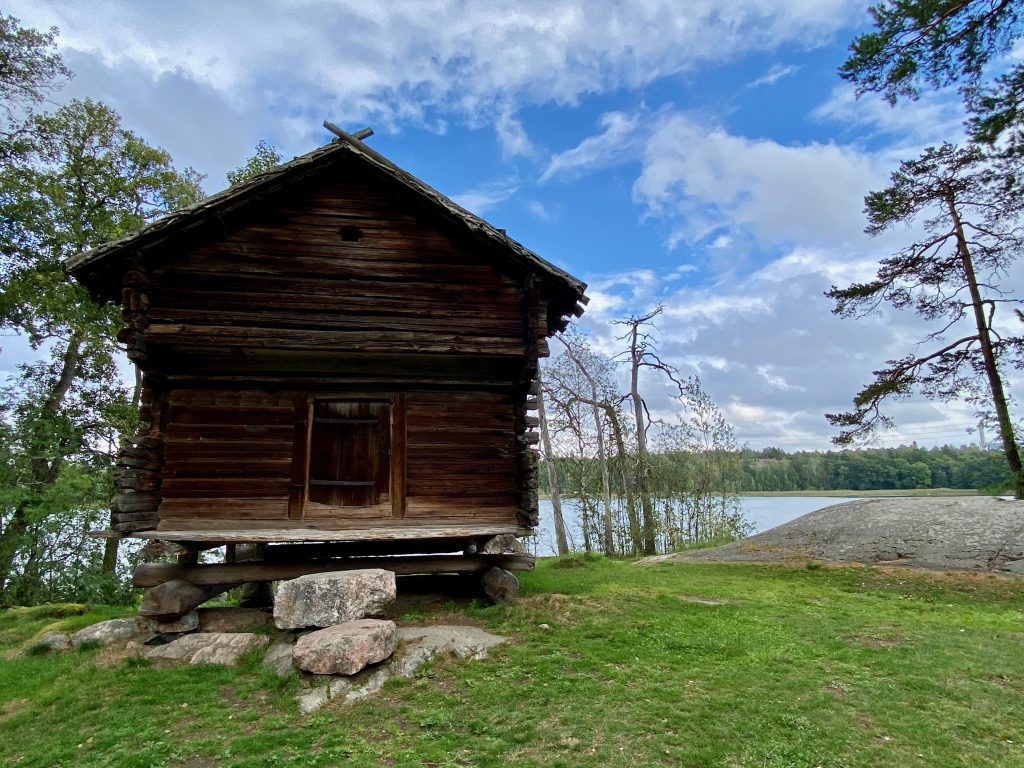Helsinki had been on our list to visit since our summer 2017 travels to Denmark, Sweden, and Norway. Although the city may not make the top list of visually compelling Nordic capitals (and unlike pretty much everywhere else we’ve been, it doesn’t have a traditional “Old Town” zone), we found many appealing qualities. It’s quite easy to get around (most signage is in Finnish, Swedish, and English), with many green public spaces, friendly residents, and a solid public transit network. Because the Finns repelled the Soviets before and during WWII, you won’t see the Soviet influences on architecture at the same scale as in the Baltic capitals. Even though we visited in late August, it turned out we missed the true summer, as late August is actually considered the fall season and there were a decent amount of rainy periods through most days. The other notable distinctions from the Baltic States were the prices, particularly for restaurants, alcohol, and activities (comparable to what we left behind in Los Angeles), and the city’s demographics appeared much more multi-cultural.
We stayed at an Airbnb in the Töölö neighborhood, a little north of the main tourist area, which was a perfect location for exploring the city while enjoying a few more residential area-type amenities. In particular, the Runeberginkatu pedestrian park cutting across the neighborhood was a pleasant feature and leads to a large playground. We patted ourselves on the back for selecting Airbnbs in both Tallinn and Helsinki which had child rooms and a lot of toys (these were actual families’ apartments): these features made Jacob much more comfortable and happy in the space. This also helped facilitate more activities to do in the Airbnb when it was rainy out, as we were able to get regular babysitting lined up in Helsinki. Jacob and Phur, our fantastic babysitter, got along super well and had a lot of fun together, especially making up their own stories with the Finnish children’s books at the Airbnb.


A few highlights from our city walk were the Senate Square and strolling along the Esplanade, a classic 19th-century-style European park, with a lot of Finnish brand stores nearby.







One of the easiest and most enjoyable excursions from Helsinki is a daytrip to Suomenlinna Island, which used to be an 18th-century fortress protecting Helsinki from invaders by sea. Now it has a small population of residents and is open to tourism, as visitors can take a 15-minute ferry ride from the Helsinki harbor and then explore the island on foot (it actually consist of six linked islands but they’re not very big). A Tourist Information center at the ferry stop and helpful blue signs throughout the island ensure that you follow the most efficient route to tour the main maritime and military history sites at Sveaborg Fort while also having an opportunity to explore the natural beauty there.






Helsinki is also known for its Nordic cuisine, and of course the seafood. Dave found one of the top seafood restaurants, Fisken på Disken @fiskendisken (Swedish for “fish on the dock”), where we had a delightfully tranquil and delicious child-free meal on a rainy night. Oysters, a whole sea bream stuffed with lemon and herbs, and roasted root veggies: yum!


For kids’ activities, I had hoped that the Seurasaari Open-Air Museum would be at the level of the excellent Skansen Open-Air Museum in Stockholm. It’s an easy bus ride from the city to reach the small, car-free island of Seurasaari. Although it’s remarkable to see the authentic and original collection of cabins, farm buildings, manor house, and boats assembled here from areas throughout rural Finland, circa 17th through 20th centuries, it’s unfortunately not as interactive as other open-air museums (e.g. demonstrating guilds and crafts, facilitating hands-on opportunities for visitors to sample the same). The children’s areas were quite limited but many families were still there picnicking and hiking around the parkland.





One activity we really enjoyed was using the city bikes to explore other neighborhoods in Helsinki, such as the Design District (home to more vintage and second-hand clothing stores in a five-square-block radius than I’ve encountered in any other city) and Kallio, a hillier zone located slightly north of the city center with cute cafes, boutiques, outdoor bars, and bordering the Tokoinranta Park with great views back toward the city. Like Tallinn, it felt like Helsinki was under perpetual construction and expansion nearly everywhere we went; we missed seeing some of the main sites like Finland Hall because it was shrouded in renovation covers.



Helsinki is an easy two-hour ferry ride from Tallinn and a short flight from the Scandinavian capitals, so we’d definitely recommend it to other travelers exploring this part of Europe.



